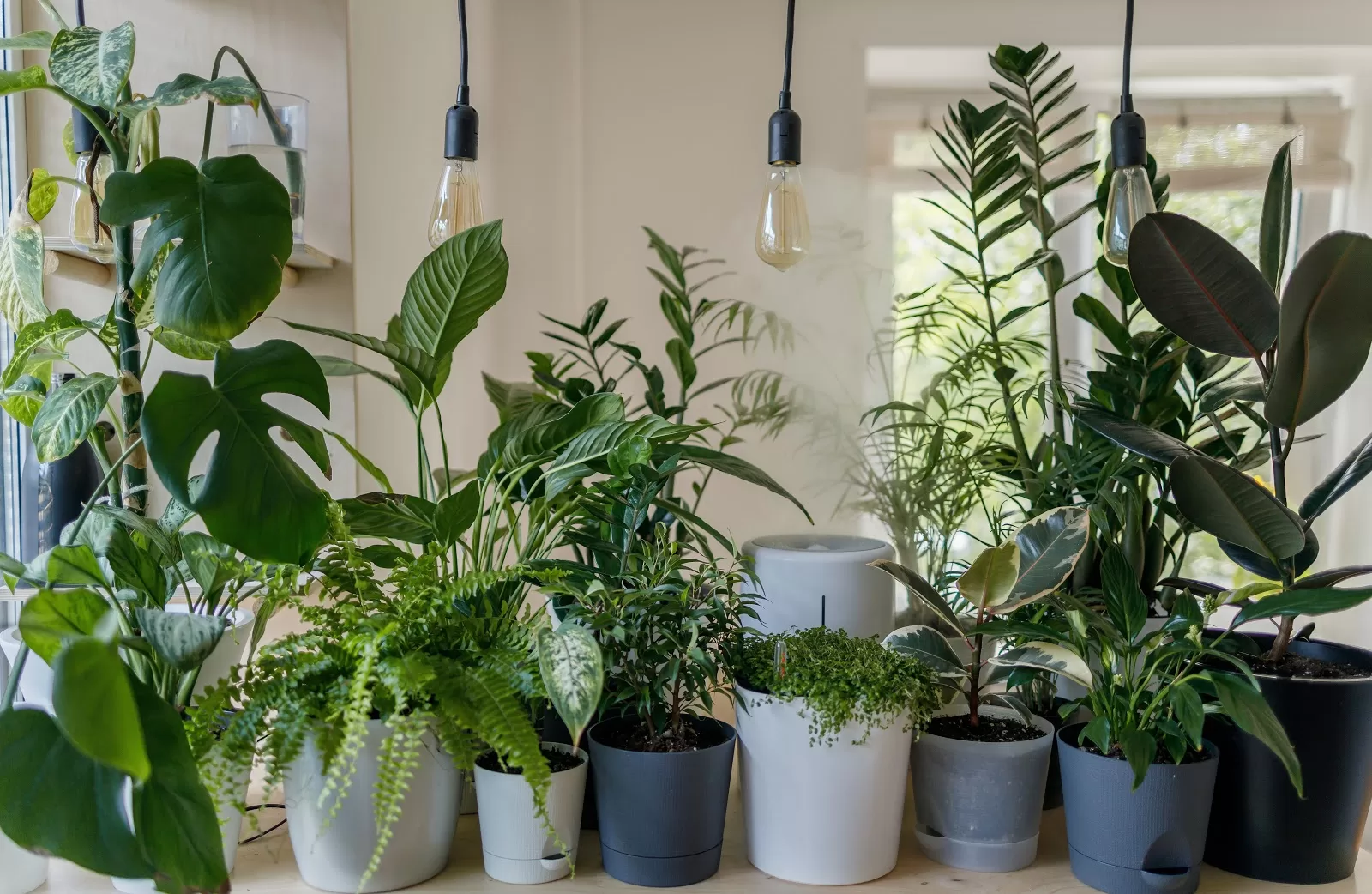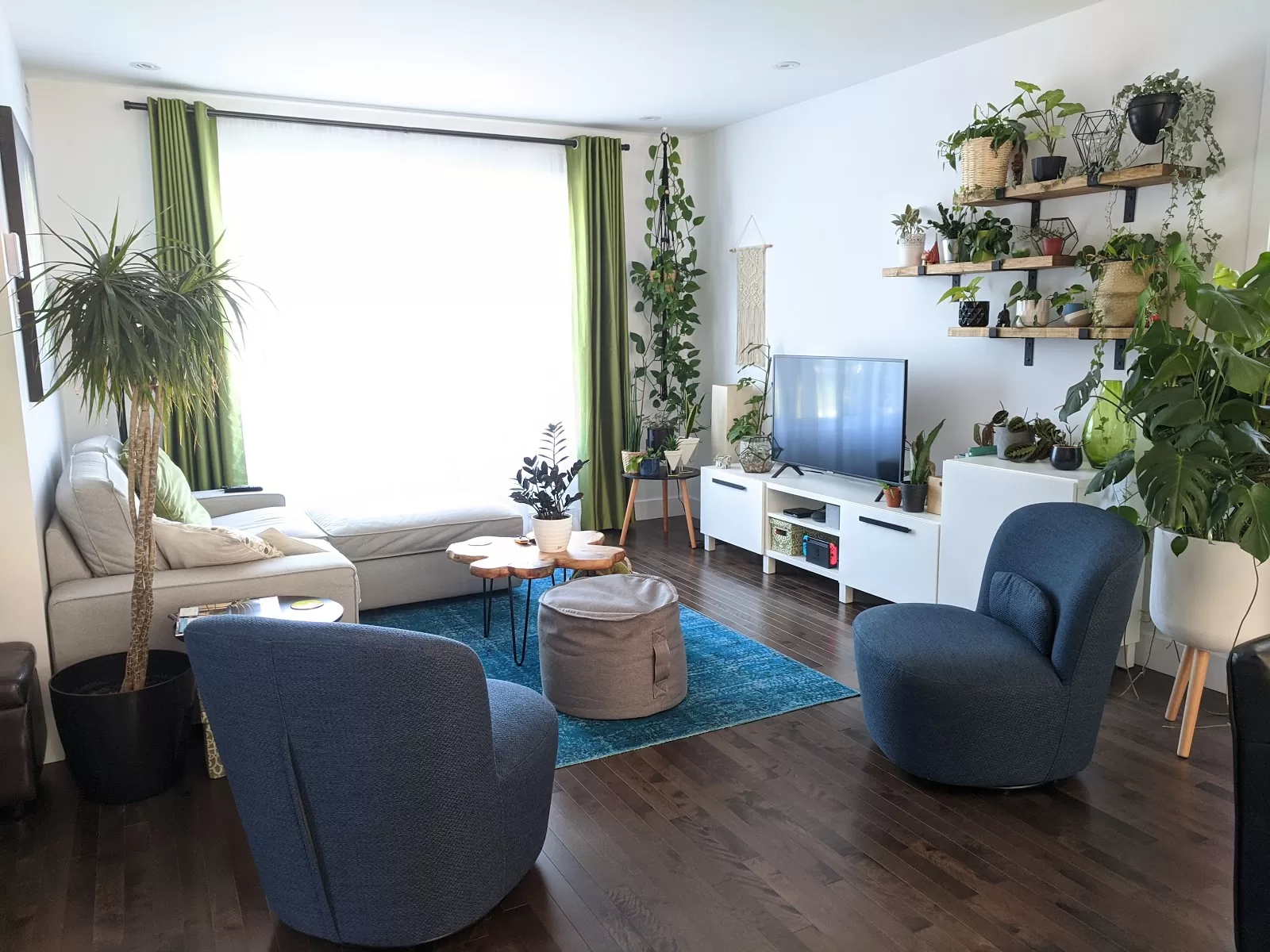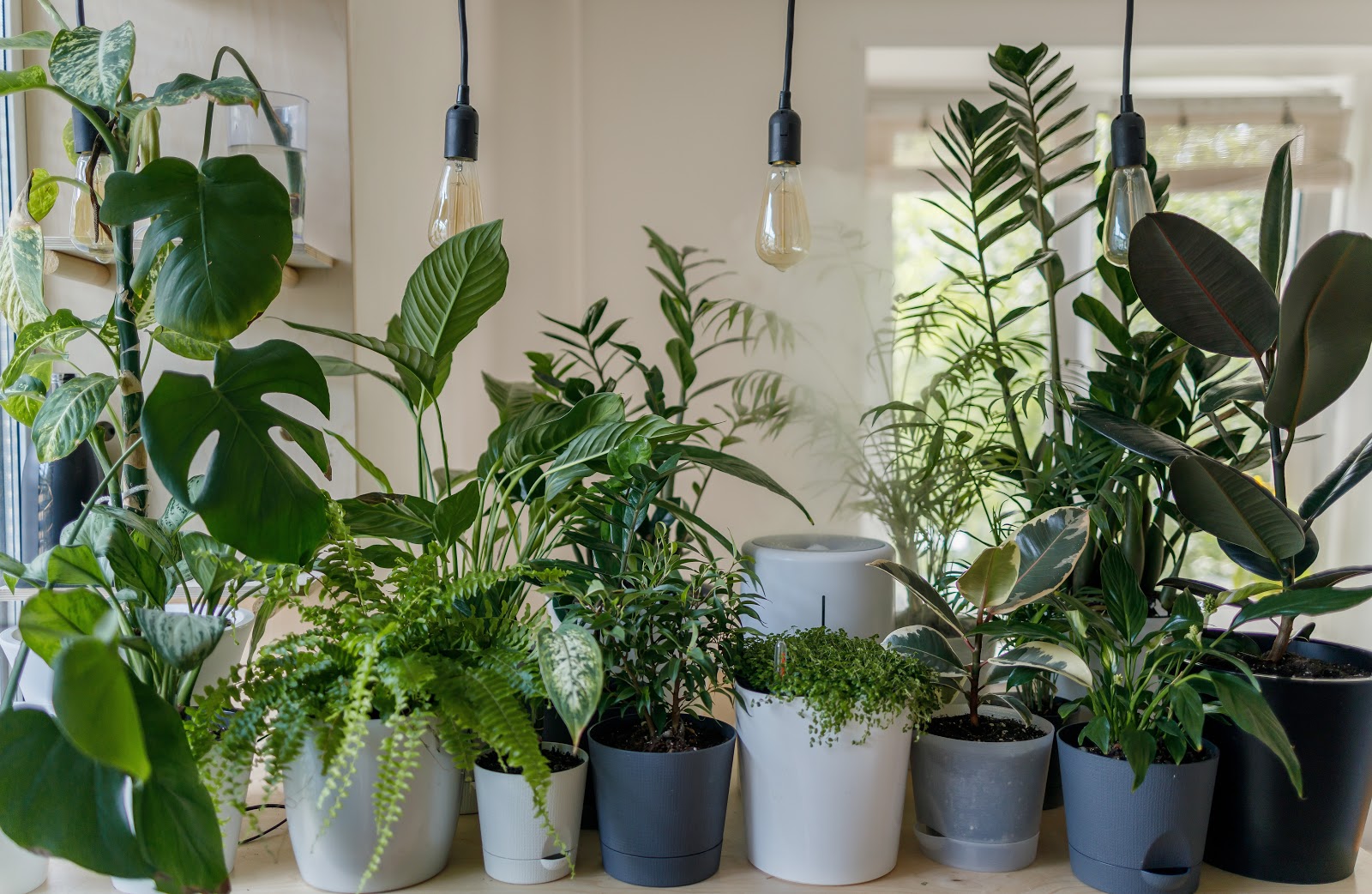
Allergies and asthma can be unpredictable, and finding a solution can be frustrating and sometimes complicated. A stuffy nose, headache and watery eyes are irritating enough as symptoms of a short term common cold. As symptoms of allergies that don’t go away after a few days rest, they can become unbearable and exhausting without having a concrete solution.
You are likely aware of the obvious catalysts for allergies, including the likes of plants, changing weather, dust mites and pollen. While many of these are out of your control, there is some good news! Your home environment is generally the place where you want to be most comfortable, and fortunately, is also the easiest place to control and manage allergy symptoms.
Managing your allergies doesn’t have to mean getting rid of your beloved houseplants or an effective cooling system. Rather, if managed correctly and chosen specifically, they can be modified to work together and to their potential.
Plants in the Office
Integrating plants into office spaces is not just an aesthetic choice; it’s a health-conscious decision that can significantly mitigate allergy symptoms. In addition to the inherent benefits of greenery, the role of commercial air conditioning and HVAC systems, especially in a city like Brisbane, is crucial in maintaining a clean and healthy work environment.
Plants are natural air purifiers. They absorb common airborne toxins and carbon dioxide, releasing oxygen and increasing humidity levels. This process helps in reducing the presence of allergens such as dust and mould spores in the air. For instance, peace lilies and spider plants are known for their air-purifying qualities, making them ideal choices for office environments.
However, the efficacy of plants in purifying air is greatly enhanced when combined with a well-maintained commercial air conditioning system. Regular commercial air conditioning maintenance ensures that the system filters air effectively, removing pollutants and allergens. This is particularly important in Brisbane, where varying temperatures and humidity levels can affect indoor air quality. Well-functioning HVAC in Brisbane offices not only regulates temperature but also plays a crucial role in filtering out external allergens and maintaining optimal indoor air quality.
Furthermore, incorporating plants in offices with robust HVAC systems creates a synergy that enhances overall air quality. The combination of natural and mechanical air purification methods ensures a healthier, more comfortable, and productive workspace. This is especially beneficial for individual
Home Humidity and Asthma
Temperature and humidity are ultimately connected. Not only do these factors affect your general comfort, but also the allergens within the air and your home. Controlling the humidity within your home can greatly increase your wellbeing, most predominantly, your allergies and asthma symptoms.
While heat and humidity are to be expected in certain seasons and environments, their consequences aren’t always predictable.
In Queensland, the Australian Bureau of Meteorology determines the relative average humidity is 67 percent and rather high. Dust mites and mould thrive in such humid environments and can wreak havoc on your asthma.
Alternatively, dry air can cause alternative effects and have a large impact on your respiratory tract. This is likely to occur in winter, and In such a case it can be necessary to actually add some humidity back into your home. The key is ultimately finding and managing balanced humidity levels to reach the desired comfortable home environment, free of asthma symptoms.

How to Reduce the Humidity of your Home
In Queensland, it is much more likely that your home is too humid than it is too dry. According to the National Asthma Council Australia, it is important to keep your home humidity levels between 30 to 50 percent, the challenge is how to do so.
There is no doubt that you already incorporate methods into your home to manage humidity levels for general comfort. For asthma and allergy symptoms specifically, there are certain methods to best control the humidity. These include:
Dehumidifiers
Dust mites love the humidity and are undoubtedly the most common trigger of asthma and allergy symptoms. Not only do dust mites live in furniture and the carpet, but they can circulate through the air in your home, becoming inescapable.
Dehumidifiers can alleviate some of this dampness and humidity within your home by drying out the air and lowering the risk of allergy triggers.
Depending on the dampness and size of your home, there are different humidifier options to get the best results. Ranging from small and portable, to built-in systems, the choice is ultimately yours and depends on whether you’re using additional management methods.
Air Filtration Systems
Most of us spend the majority of our time inside, and in spaces where pollutants aggravating asthma and allergy symptoms can thrive. Air purifiers can rid of unwanted air particles causing your uncomfortable symptoms. These systems do more than just modify the air, they are clever and able to identify, filter and remove pollutant particles.
Similar to dehumidifiers, there are many different system sizes to best help filter your air and combat allergies. It is important to look at what you are hoping to filter, as different systems can remove different particles to various degrees.
Central Air Conditioning
Air conditioning systems have the potential to worsen some allergy symptoms as a prime environment for pollen or dust mites to breed. We often take our humble air conditioners for granted, simply abusing their comforting powers without taking care of them.
As they aren’t always physically dirty, it is easy to dismiss air conditioners as catalysts for allergies. However, if they are not kept clean and regularly maintained, even within a house that is otherwise allergy-friendly, you can end up circulating dirty and polluted air throughout your home.
House Plants
House plants have always been a desirable way to add some life into your home, and more recently have become the trend and home aesthetic to aspire to.
While house plants have many benefits, choosing the wrong plant has the potential to worsen your allergy symptoms. This doesn’t mean you need to give up on your plant parent lifestyle, but rather, choose your plants wisely.

How do Houseplants Improve Air Quality?
It is common knowledge that plants absorb carbon dioxide and release oxygen, but how does that actually affect you?
Essentially, this cycle within a plant’s life releases moisture into the air with subsequent purifying effects. In other words, they behave like a somewhat natural humidifier.
Just as they sound, ammonia, formaldehyde, trichloroethylene and benzene are air pollutants that you don’t really want hanging around. Fortunately, several plants are particularly useful in actively removing these common pollutants and help reduce asthma and allergy symptoms.
If you don’t consider yourself a ‘plant person’, the good news is that just one plant per 100 square feet has the potential to efficiently improve air quality. The upkeep of plants also isn’t all that it seems, and many suitable house plants require minimal care, perfect if you’re not an avid gardener.
You don’t need an excessive variety of plants to ease allergy symptoms. Rather, learning how to care for a few different types of plants and placing multiple into your home can achieve optimal results. While many species have the potential to improve air quality, like anything, they must be kept healthy to function effectively.
Plants that Can Reduce Allergy Symptoms
If you are a plant lover, it can be so disappointing to have to part ways with your beloved plants. However, there are many plant options that won’t pollute air quality and actually have the potential to improve it.
Peace Lily:
Aesthetic and low maintenance, what more could you ask for. Peace Lilies are easy to grow and effectively purify the air in your home by breaking down and neutralising pollutants and removing mould spores.
The pollen it produces is stickier and heavier than other flowers, and less likely to stay in the air and cause irritation. A beautiful and useful plant, it certainly lives up to its name.
Heartleaf Philodendron:
Known for their versatility, heartleaf philodendrons have been shown to improve indoor air quality through their process of photosynthesis. Able to rid of harmful gasses in the air, it is ideal to be placed around furniture that may be giving off gas and harbouring toxins.
Rubber Tree:
Useful in nature, rubber trees are an extremely common house plant able to purify the air of chemical toxins which can irritate the eye, nose and throat. A study done by NASA recommends just two of the trees for every 100 square feet of your home, again a great choice if plant maintenance is not your forte.

Plants to Avoid if you Have Allergies
While plants can be the perfect item of home decor, and some even benefit your air quality, certain plants could actually be causing your allergy symptoms.
Weeping Fig:
The weeping fig is a popular house plant as it is so easy to care for, but is also a common collector of dust mites. If you find yourself suffering allergy symptoms, it is worth removing this plant from your home to identify whether or not it is the culprit.
Ferns:
Ferns have the tendency to release spores that can cause a rash and further allergy symptoms. They are much better suited to the outdoors where they can release these toxins into the outside air rather than accumulating within your home.
Palms:
Similar to ferns, palms are more suited to outdoor environments as the male species has the potential to spew pollen into the air, polluting your indoor space.
If you or one of your family members has asthma or suffers from allergies, it is essential that you keep your indoor air as free of allergens and toxins as possible. Although the natural route of using plants to increase the air quality in your home is a fantastic method, you may not be able to solely rely on them to improve your asthma symptoms.
Always discuss lifestyle changes with your healthcare provider and continue to take any medicine as prescribed. More importantly, contact your local air conditioning expert for more advice on how you can combine the benefits of indoor plants with the perfect air conditioning system for optimal health and living.





